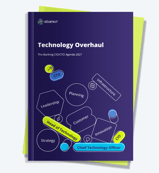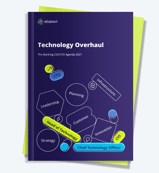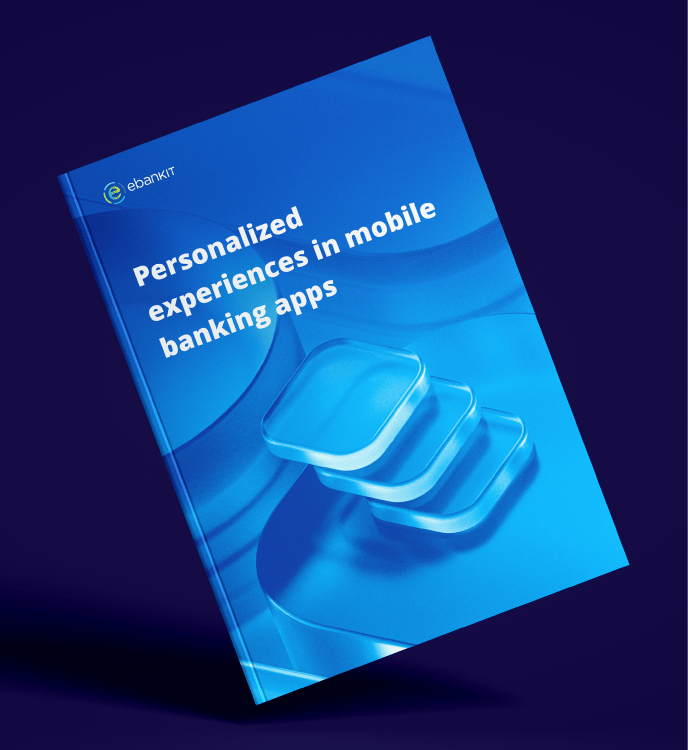The AI Tsunami: will banks surf or sink?
Recorded on June 12, 2025
![]()
SPEAKERS
SUMMARY
This presentation explores how AI is rapidly transforming industries, emphasizing the rise of AI agents, strategic challenges in adoption, and the widening gap between AI awareness and implementation. Using real-world examples, it urges businesses to move beyond experimentation and embrace AI strategically to stay competitive in an accelerating digital landscape.
Key topics
AI is framed as a technological tsunami, a rapidly growing wave of innovation that will have a massive impact on the economy. Businesses must urgently respond to it or risk becoming obsolete.
Autonomous AI systems that go beyond tools and actively perform tasks will replace human roles in customer service, insurance claims, and internal operations. One person with an AI agent can replace entire teams
Most leaders acknowledge AI’s importance, but few have a concrete strategy, team, or budget. 99% of companies are stuck in the pilot phase, and many projects fail during the scaling phase.
Transcript
00:00:00 - Introduction
Rogério Canhoto introduces their intention to share a personal perspective on how AI is impacting business. They express the hope that the audience will recognize some of the issues discussed and be inspired to reflect on them. To set the stage for a discussion about the future, the speaker emphasizes the importance of understanding the past.
The narrative shifts to a scene from 50 years ago, describing a typical home desk equipped with a typewriter, camera, books, and an encyclopedia—tools used for communication, creativity, and information. The speaker focuses particularly on the camera to illustrate how photography was once a complex and exclusive activity, far from the instant, digital experiences we enjoy today. It involved technical knowledge, film development, and was not widely accessible. Despite this, the photography industry was a massive, multi-million-dollar business.
The speaker then introduces a pivotal figure in the history of photography: Steven Sasson, a young engineer who invented the first digital camera. Working at a major photography company just out of college, Sasson combined various components like a tape and lens to create a prototype that challenged the industry’s existing model. The segment ends with the rhetorical setup of Sasson preparing to present his disruptive invention to his boss, hinting at the tension between innovation and established business models.
00:05:00 - Tsunamis of innovation
Rogério continues with the story of Steven Sasson and Kodak. After inventing the first digital camera, Sasson presented his prototype to Kodak’s CEO, Walter Fallon, claiming it could revolutionize their business. However, Fallon dismissed the innovation with the remark, “That’s cute, but don’t tell anyone about it.” Kodak, a dominant player with 15,000 stores worldwide, failed to act due to its entrenched ecosystem and success, unaware that a digital “tsunami” was approaching. This resistance to change eventually led to Kodak’s downfall.
The speaker then shifts to another cautionary tale involving John Antioco, the former CEO of Blockbuster. Blockbuster was also a market leader with 9,000 stores and had the opportunity to buy Netflix for $50 million in 2000. They declined. By 2007, Netflix launched its streaming service, and just a few years later, Blockbuster was out of business. This illustrates what the speaker calls "digital Darwinism," where technological change outpaces corporate adaptation.
The discussion then broadens to emphasize that such tsunamis are arriving faster and with greater economic impact. Historical technological shifts, like the steam engine, took a century to absorb. Today, companies have only a few years to adapt. This compressed timeline puts intense pressure on organizations and managers, many of whom are not prepared to understand or react to the AI revolution.
The speaker argues that AI represents the latest digital tsunami—one that’s been building for decades but has recently surged into mainstream awareness. It’s now transforming industries at a breakneck speed, often without clear understanding of its full implications. To illustrate the potential misuse of AI, the speaker cites an example from Donald Trump’s campaign, where fake images of him with African-American communities were generated and widely distributed on social media, highlighting the technology’s power for manipulation as well as innovation.
00:10:00 - AI-driven manipulation
In this portion of the presentation, the speaker explores both the darker and more promising sides of AI's growing influence. They begin by discussing AI-driven manipulation, pointing to Operation Undercut, a documented case where a social media agency used AI to generate massive volumes of content aimed at undermining Western support for Ukraine. The campaign pushed narratives suggesting Europe should focus on its own problems rather than the conflict in Ukraine—showcasing AI’s ability to distort public opinion at scale.
The presentation then transitions to positive applications of AI, highlighting groundbreaking work by universities like Harvard and the University of Chicago. By analyzing 5 million medical records, researchers were able to identify signs of Alzheimer’s disease up to seven years in advance. This discovery excited both the pharmaceutical and insurance industries, though the latter’s interest raises ethical concerns about profiling in insurance coverage.
Another uplifting example is the Be My Eyes app, which helps visually impaired users by describing their surroundings, increasing autonomy and mobility. Yet, even helpful innovations can take on strange dimensions. For instance, Panasonic resurrected its founder as an AI avatar to onboard new employees and reinforce corporate culture. Similarly, the Arizona Supreme Court recently approved AI avatars to provide limited legal representation in civil cases—signaling a profound shift in professional roles.
The speaker emphasizes that AI is accelerating productivity, changing talent needs, and reshaping the labor market. It’s not a distant trend; it’s happening now—just as Kodak and Blockbuster failed to notice their own incoming digital tsunamis, many businesses today may be overlooking AI’s transformative impact.
A critical point is the disconnect between recognition and action. While 85% of managers believe AI will be the primary source of competitive advantage in their industry, only 15% have actual strategies, budgets, teams, and deadlines in place. The speaker calls this gap between belief and preparation “just intention—not a plan.”
To drive urgency, the speaker cites thought leaders like Sundar Pichai, who claimed AI will impact humanity more deeply than fire or electricity, and Marc Andreessen, who recently declared we are witnessing the collapse of a 100-year-old knowledge work model. These quotes reinforce that we are in a pivotal moment of change, and being passive or unprepared could lead to missed opportunities—or worse.
00:15:00 - AI agents in the workforce
Rogério here highlights the transformational shift toward AI agents in the workforce, marking the start of what they call the AI Agent Economy. Referencing leading voices in tech, the speaker points to a recent quote predicting that AI agents will dramatically reshape productivity and industries. Bill Gates, for example, envisions a two-day workweek within a decade—underscoring the profound changes AI could bring to the very structure of work. The key takeaway is that organizations and individuals must start questioning the economic value of their roles, as AI begins to automate more complex functions.
He stresses that while we've been using powerful tools like ChatGPT, Perplexity, and Claude, we're now entering a new phase where autonomous AI agents can take actions, not just provide suggestions. This is fueling what they call the "new AI gold rush."
A diagram from Accenture is referenced, showing the banking industry as a prime target—it’s heavily regulated, not yet deeply disrupted, and therefore a sweet spot for AI adoption. However, this also introduces paradoxes the industry must navigate, and the speaker begins to outline five of them.
The Trust Paradox: Banking is built on trust, which can’t be programmed. Consumers generally prefer traditional banks for their reliability, even if those banks don’t fully leverage their customer data. On the other hand, new fintech players offer better UX and personalization, creating a dilemma: stick with the trusted but outdated system, or adopt dynamic new entrants?
The Speed Paradox: Tech leaders face a strategic dilemma—should they build proprietary AI systems, which are slow, expensive, and require rare talent, or buy third-party solutions, which are faster to deploy but less customizable? Although many institutions want to build internally, a majority (58%) prefer buying due to lack of in-house skills.
The speaker then transitions to real-world examples of AI agents in action. At Atom, their company, and in collaboration with Novo Banco in Portugal, AI has started to streamline operations. For instance, in the past, bank employees had to call a commercial help desk to clarify product information, often leaving customers waiting for minutes. Now, AI agents are taking over that role, removing friction and improving customer experience—saving time and reducing the need for human intermediaries.
This section emphasizes that AI is not theoretical anymore—it's being actively deployed in ways that directly change how businesses operate and how customers are served. The shift is underway, and the speaker is building urgency for businesses to move from awareness to concrete action.
00:20:00 - AI real-world examples
In this part of the presentation, the speaker provides of how AI agents are already transforming businesses across sectors by enhancing productivity, efficiency, and customer experience.
Previously, customer service at Novo Banco's branches required employees to call a central help desk to get information about products, leading to long wait times and customer dissatisfaction. The solution: an AI-powered voice agent that could instantly respond to inquiries based on a knowledge base. The results were clear: a 26% improvement in handling time and a 15% increase in customer satisfaction.
Bizay, an e-commerce platform, introduced an AI agent to manage customer service inquiries, such as delivery charges or order modifications. It now handles 30% of customer tickets fully and has improved response time by 50%.
Another example is Advanced Care (insurance). Previously, medical claim processing took 2–3 days, requiring human interaction over the phone. Now, an AI agent processes them in just 30 minutes, resulting in a tenfold reduction in operational costs.
These use cases highlight a clear shift: one manager equipped with an AI agent can replace entire teams. This isn’t limited to customer service—it’s also affecting sales, marketing, and more. However, the speaker warns that having AI isn’t enough; what matters is knowing how to master and implement it effectively, or face irrelevance.
Rogério points out a disconnection in the banking industry. Banks focus on sales goals—pushing products and maximizing leads. Customers, however, want simplicity, informed decision-making, and less friction in managing their finances.
This gap is being exploited by intermediaries—third-party players who use AI to deliver better customer experiences, earning trust by simplifying users' lives, not pushing products. These intermediaries are reshaping the value chain in financial services.
The speaker references McKinsey’s “Great Banking Transition” report, noting that 3 out of 5 strategic pillars involve AI. Yet, despite its potential, AI often fails to deliver business value because only 1% of companies are actually realizing meaningful results. 99% remain stuck in the pilot phase and 17% of projects fail, especially during scaling. The key message is that AI only delivers value when it’s well-trained, well-fed with data, and guided by strategy. Without these elements, companies risk falling into a loop of experimentation with no real impact—while competitors move ahead.
He encourages to watch out for small players that will grow big in a couple of years. He highlights no one is big enough to not fail. So at the end of the day financial institutions must move fast and adapt because the AI tsunami is growing and getting faster and will have a big impact. He finishes with a quote from Jeff Bezos, underlining that we are barely scratching the surface of AI.
The goal of the presentation was to show some opportunities for handling AI and, on the other hand, make people think about the challenges they are facing.




%20without%20SAM%20-%20Maturity%20Level%20-%202-KO%20edit.webp?width=160&height=57&name=67768-ebankIT%20Platform%20-%20CMMI%20Development%20V2.0%20(CMMI-DEV)%20without%20SAM%20-%20Maturity%20Level%20-%202-KO%20edit.webp)
